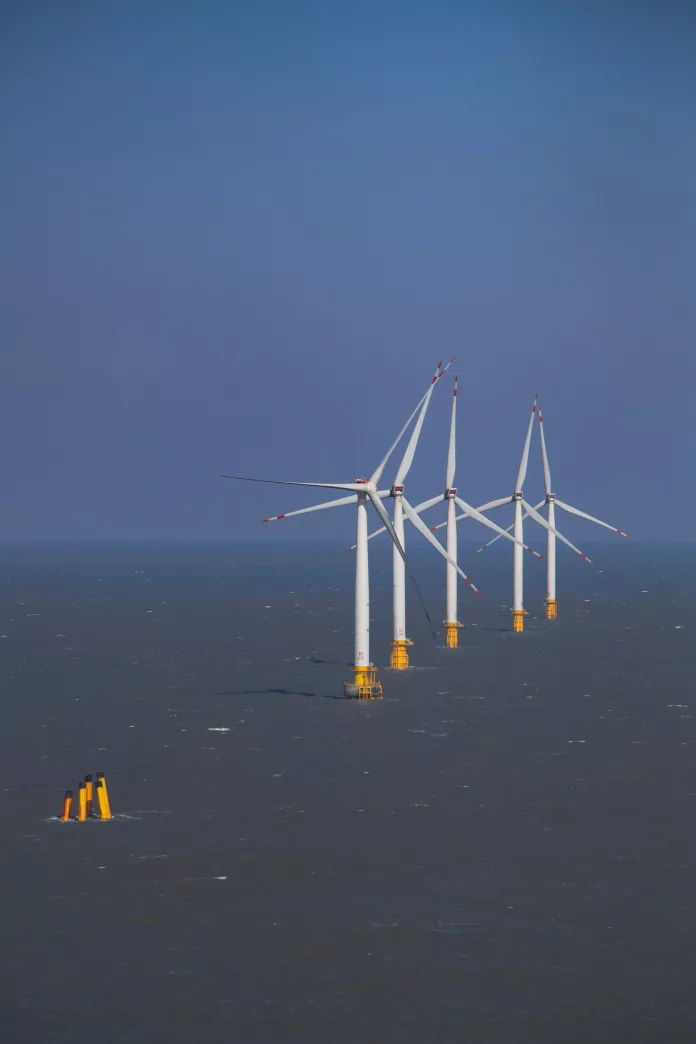The quest for clean energy extends beyond electricity generation; it seeks to transform the very infrastructure that builds it. The offshore wind sector is taking meaningful steps towards sustainability, not just in the air but on the water too.
Electrification and Greener Fuels in Maritime Operations
The maritime industry has traditionally been a stronghold of fossil fuels, with over 95% of ships reliant on internal combustion engines using petroleum derivatives. Now, the tide is turning, with initiatives such as Damen‘s electric service operation vessel (SOV) paving the way for a more sustainable future. Global Maritime Forum emphasizes this shift, noting the sector’s slow but significant push towards electrification and wind-assisted solutions.
In the interim, as electricity’s role in maritime propulsion grows, alternative fuels are gaining spotlight. Global offshore wind leader Ørsted champions methanol from renewable sources as a bridge to curb emissions during this transition. Their alliance with ESVAGT to construct methanol-powered SOVs, with one expected to set sail by 2026, underscores their commitment to reducing their carbon footprint significantly.
Ørsted’s E-Methanol Endeavors Elevate the Offshore Wind Industry
The synergy of renewable energy and biogenic carbon yields green hydrogen, thrusting Ørsted further into the e-methanol business. The firm’s self-supply strategy for green fuels recently took a giant leap forward with the US Department of Energy‘s $100 million backing for its new Star e-Methanol facility. This Power-to-X plant embodies an innovative model for slashing emissions up to net-zero by utilizing green hydrogen, produced via electrolysis using renewables.
With Maersk as a potential client, Ørsted’s production of up to 300,000 metric tons of e-methanol per year could revolutionize not just maritime fuel but could extend its reach to aviation and chemical manufacturing sectors as well.
Forging Pathways to Cleaner Maritime Operations in Texas
Positioned at the crossroads of ample wind and solar resources, water availability, and biogenic carbon sources from industrial outputs, Texas emerges as an epicenter for Ørsted’s groundbreaking ventures. Aiming for over a 90% reduction in carbon emissions from marine fuels, Ørsted’s initiatives align smoothly with the state’s burgeoning green hydrogen and e-fuel industries, contrary to the state’s complicated relationship with renewable investments.
The US Department of the Interior highlights the construction of Dominion Energy‘s Charybdis offshore wind vessel in Texas, poised to support the colossal 176-turbine Coastal Virginia Offshore Wind project. Such developments signal the state’s instrumental role in fostering America’s marine vessel manufacturing, aimed at supporting the offshore wind industry’s growth.
The Jones Act: Safeguarding American Maritime Interests
While the Charybdis SOV’s stance on alternative fuels remains unannounced, its status as the first Jones Act-qualified offshore wind installation vessel is significant. The Jones Act, enforcing strict ownership and crewing standards, underpins the US Merchant Marine’s economic and defensive imperatives.
Despite critics lobbying for its repeal to supposedly “rescue” the offshore wind industry, the real bottleneck lies within the global shortage of specialized workboats. This challenge persists regarless of the Jones Act, and is being addressed by US shipyards, albeit gradually. In addressing these industry dynamics, President Joe Biden reaffirmed his administration’s staunch support for the Jones Act and the Merchant Marine in 2022, recognizing their pivotal roles in national defense and economic wellbeing.
As the offshore wind industry continues to innovate and adopt greener practices, it demonstrates a holistic approach to combating climate change—a commitment that flows from the skies to the seas, supporting a future that’s not just cleaner, but also distinctly more sustainable.

























